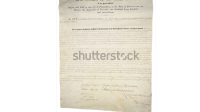Introduction: The Settlement of Port Phillip
The Settlement of Port Phillip in 1803 marked a significant event in Australian history, laying the foundations for what would become the city of Melbourne. This early attempt at settlement was part of a broader effort by the British to establish control over strategic locations in Australia. Understanding the context, key figures, and outcomes of this settlement provides valuable insights into the challenges and dynamics of early colonial expansion in Australia.
The establishment of Port Phillip was driven by a combination of strategic, economic, and exploratory motives. While the settlement faced numerous challenges and was short-lived, its legacy had lasting implications for the development of the region. The history of Port Phillip reflects the broader themes of exploration, colonization, and the interactions between European settlers and Indigenous Australians.
Read Also : The Teapot Dome Scandal (1920s): Unveiling America’s First Major Political Scandal
The Historical Background: Britain’s Colonial Expansion and the Settlement of Port Phillip
To fully appreciate the significance of the Port Phillip settlement, it is essential to understand the broader context of British colonial expansion in the early 19th century. During this period, the British Empire was rapidly expanding its territories across the globe, driven by a combination of strategic, economic, and political motives.
Strategic and Economic Motives Behind the Settlement of Port Phillip
The British saw Australia as a valuable addition to their empire for several reasons. Strategically, establishing a presence in Australia would prevent other European powers, particularly the French, from gaining a foothold in the region. Economically, Australia’s vast and unexplored lands promised new resources and opportunities for trade and settlement.
The increasing population of convicts and free settlers in New South Wales also created a need for additional territories to accommodate the growing demand for land. The British government was keen to explore and secure more areas to ease the pressure on existing settlements and provide new opportunities for agricultural and economic development. This drive for expansion was seen as essential for maintaining the prosperity and stability of the growing colony.
Additionally, the discovery of natural resources such as timber, minerals, and fertile land further motivated the British to extend their reach. The economic benefits of exploiting these resources were substantial, and the British government was determined to capitalize on these opportunities. This focus on economic exploitation often overshadowed the interests and rights of the Indigenous populations, leading to significant conflicts and displacement.
The First Fleet and Early Settlements Leading to Port Phillip
The arrival of the First Fleet in 1788 marked the beginning of British settlement in Australia. Initially focused on New South Wales, the British gradually extended their reach to other parts of the continent. The success of these early settlements encouraged further exploration and the establishment of new colonies, including the attempt to settle at Port Phillip in 1803.
The early settlements faced numerous challenges, including harsh environmental conditions, conflicts with Indigenous peoples, and logistical difficulties. Despite these obstacles, the British continued to pursue their colonial ambitions, driven by the belief in their civilizing mission and the promise of economic rewards. These early efforts laid the groundwork for subsequent explorations and settlements across Australia, highlighting the resilience and determination of the early colonists.
The establishment of new settlements also served as a strategic measure to secure British claims against other European powers. Each new colony reinforced British sovereignty and provided a base for further territorial expansion. The settlement at Port Phillip was part of this broader strategy to consolidate British control over key regions of Australia and ensure the security of their growing empire.
The Expedition to Port Phillip: Establishing a New Settlement
The expedition to establish a settlement at Port Phillip was led by Lieutenant Colonel David Collins. In 1803, Collins and his team set out from England with a group of convicts, marines, and free settlers, aiming to create a new colony in the Port Phillip area.
The Arrival at Port Phillip and Initial Challenges
Upon arrival, the settlers faced immediate challenges. The site chosen for the settlement, near present-day Sorrento, was found to be unsuitable due to a lack of fresh water and arable land. The harsh conditions and logistical difficulties made it clear that sustaining a colony in this location would be problematic.
Despite their best efforts, the settlers struggled to establish a stable community. The lack of resources, combined with the harsh environment, led to significant hardships. The settlers had to contend with insufficient food supplies, inadequate shelter, and the constant threat of disease. These conditions made daily life extremely difficult and survival a constant struggle.
Interactions with Indigenous Peoples at Port Phillip
The arrival of the British settlers also led to interactions with the Indigenous peoples of the region. The local Indigenous groups, including the Wurundjeri and Boonwurrung peoples, had lived in the area for thousands of years and had a deep connection to the land. The arrival of the settlers disrupted their way of life and led to tensions and conflicts.
The settlers’ attempts to establish their colony often encroached on Indigenous lands, leading to clashes over resources and territory. The lack of understanding and respect for Indigenous customs and rights exacerbated these conflicts. Efforts to communicate and negotiate were often hindered by language barriers and cultural misunderstandings, making peaceful coexistence challenging.
Despite these tensions, there were also instances of cooperation and exchange between the settlers and Indigenous peoples. Some Indigenous individuals assisted the settlers by sharing knowledge of the land and its resources. However, these interactions were overshadowed by the broader conflicts and the settlers’ determination to assert control over the territory.
The Decision to Abandon the Settlement at Port Phillip
After several months of struggling to sustain the settlement, Collins decided to abandon Port Phillip. The harsh conditions, lack of resources, and ongoing conflicts with Indigenous peoples made it clear that the site was not viable for a permanent colony. In 1804, the settlers relocated to Van Diemen’s Land (now Tasmania), where they hoped to find more favorable conditions for establishing a colony.
The decision to abandon the settlement was not made lightly. It reflected the considerable challenges faced by the early colonists and the harsh realities of their situation. The move to Van Diemen’s Land marked the end of the initial attempt to settle at Port Phillip, but it also paved the way for future explorations and settlements in the region.
The Legacy of the Port Phillip Settlement: Impact on Australian History
Despite its short-lived nature, the settlement of Port Phillip had lasting implications for the development of the region and Australian history as a whole. The lessons learned from this early attempt at colonization informed subsequent efforts to establish permanent settlements in Australia.
Influence on Subsequent Settlements in the Region
The experience at Port Phillip highlighted the importance of selecting suitable locations for settlements, considering factors such as access to fresh water, arable land, and resources. The challenges faced by Collins and his team underscored the need for thorough exploration and planning before establishing new colonies.
The relocation to Van Diemen’s Land, while initially seen as a setback, ultimately contributed to the successful establishment of a permanent settlement in Tasmania. The knowledge and experience gained from the Port Phillip expedition were invaluable in overcoming the challenges of settling in a new and unfamiliar environment.
Long-Term Effects on Indigenous Populations
The arrival of British settlers at Port Phillip had profound and lasting effects on the Indigenous populations of the region. The disruption of traditional lands, resources, and ways of life led to significant conflicts and displacement. The settlers’ presence marked the beginning of a period of profound change and upheaval for the Indigenous peoples, whose cultures and societies were deeply impacted by the colonization process.
The interactions between the settlers and Indigenous peoples during the Port Phillip expedition also highlighted the need for better communication and understanding. The conflicts and tensions underscored the importance of respecting Indigenous rights and customs in future colonial endeavors. These early encounters set the stage for the complex and often contentious relationship between Indigenous Australians and European settlers that would continue throughout Australian history.
The Birth of Melbourne: From Port Phillip to a Thriving City
Although the initial settlement at Port Phillip was abandoned, the region would eventually become the site of Melbourne, one of Australia’s largest and most important cities. The lessons learned from the 1803 expedition informed later efforts to establish a permanent colony in the area. In 1835, a group of settlers led by John Batman and John Pascoe Fawkner successfully founded Melbourne on the banks of the Yarra River.
The establishment of Melbourne marked a new chapter in the history of Port Phillip, transforming the region into a thriving hub of commerce, culture, and innovation. The city’s growth and development were shaped by the legacy of the early settlers and the challenges they faced in their initial attempts to colonize the area.
Conclusion: Reflecting on the Settlement of Port Phillip
The Settlement of Port Phillip in 1803 was a pivotal moment in Australian history. Although the settlement was short-lived, its impact on the region and the broader narrative of Australian colonization was significant. The challenges faced by the early settlers, their interactions with Indigenous peoples, and the lessons learned from this early attempt at colonization all contributed to shaping the future of Australia.
The legacy of the Port Phillip settlement is reflected in the development of Melbourne, the ongoing relationship between Indigenous Australians and European settlers, and the broader themes of exploration, colonization, and adaptation that characterize Australian history. Understanding the story of Port Phillip provides valuable insights into the complexities and dynamics of early colonial expansion and the enduring impact of these efforts on the nation’s development.
FAQ About the Settlement of Port Phillip
What was the Settlement of Port Phillip?
The Settlement of Port Phillip was an early attempt by the British to establish a colony in the Port Phillip area of Australia in 1803. Led by Lieutenant Colonel David Collins, the settlement faced numerous challenges and was eventually abandoned.
Why was the Settlement of Port Phillip abandoned?
The settlement was abandoned due to harsh environmental conditions, lack of fresh water, inadequate resources, and ongoing conflicts with Indigenous peoples. These challenges made it difficult to sustain a permanent colony at the chosen site.
What was the impact of the Settlement of Port Phillip on Indigenous peoples?
The arrival of British settlers disrupted the traditional lands and way of life of the Indigenous peoples in the region. This led to significant conflicts, displacement, and lasting impacts on Indigenous cultures and societies.
How did the Settlement of Port Phillip influence the development of Melbourne?
The lessons learned from the initial settlement attempt informed later efforts to establish a permanent colony in the region. In 1835, settlers successfully founded Melbourne, which grew into one of Australia’s largest and most important cities.
What are the long-term legacies of the Settlement of Port Phillip?
The settlement’s legacy includes the development of Melbourne, the ongoing relationship between Indigenous Australians and European settlers, and the broader themes of exploration, colonization, and adaptation in Australian history.







2 comments